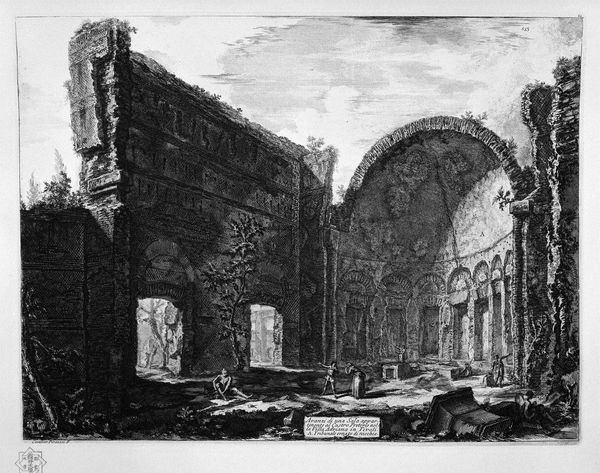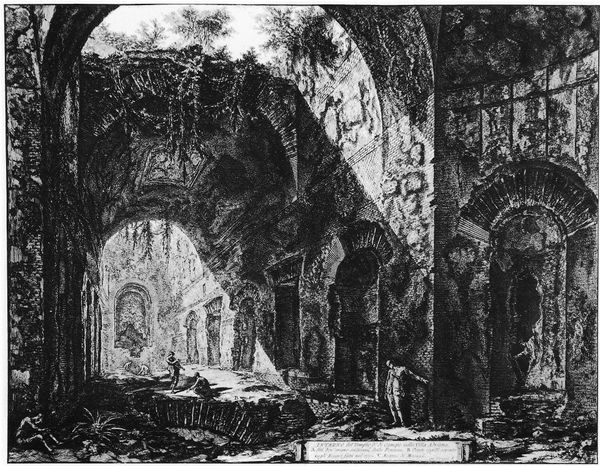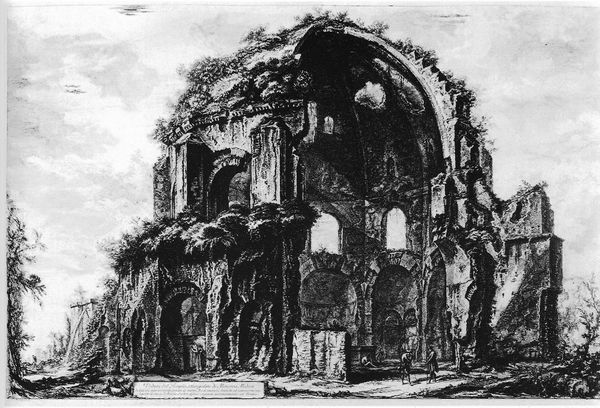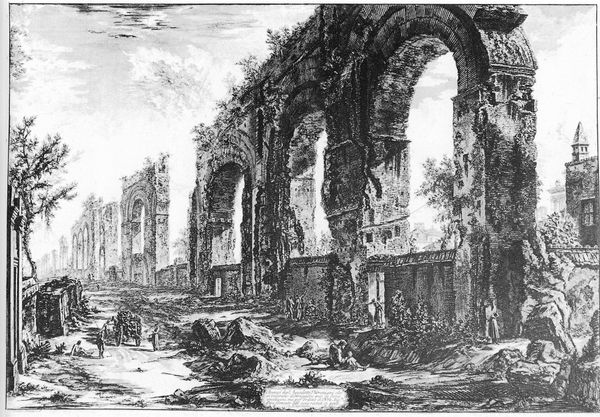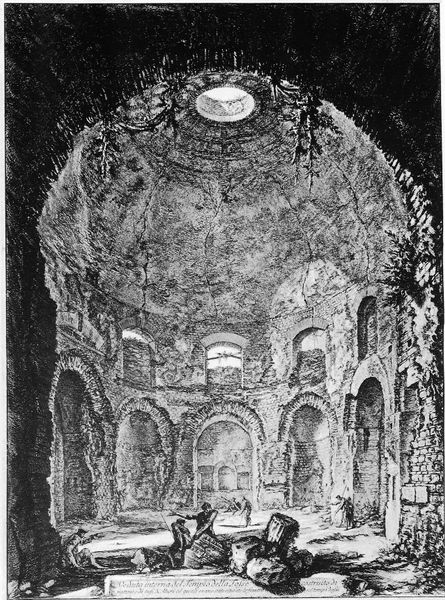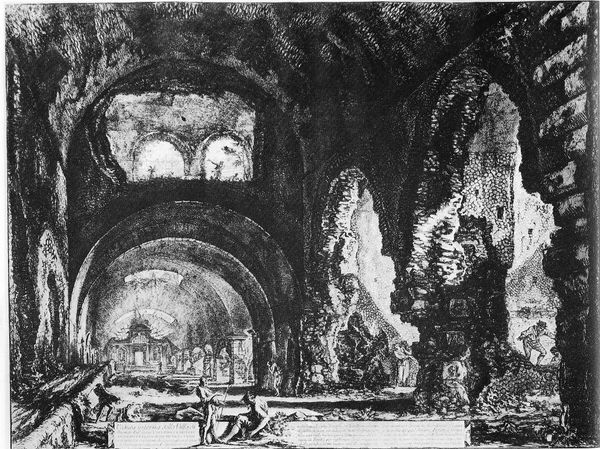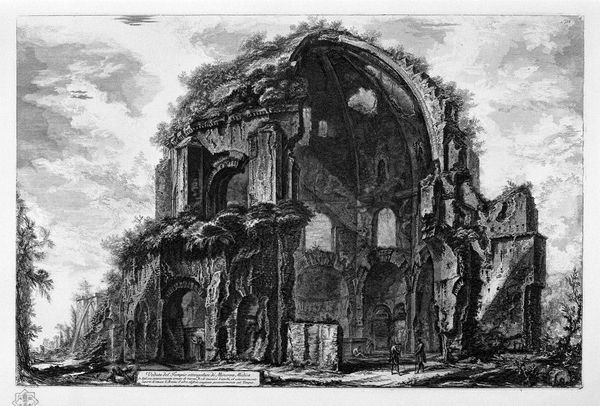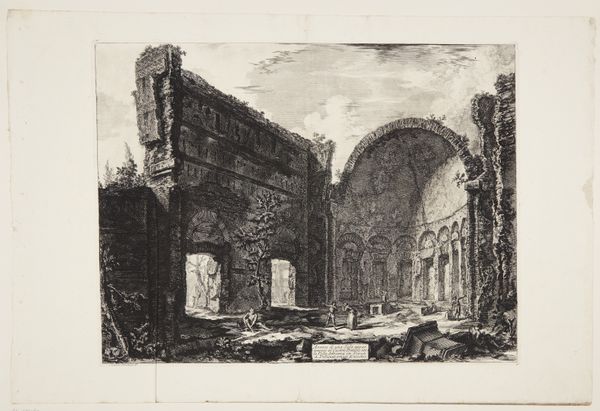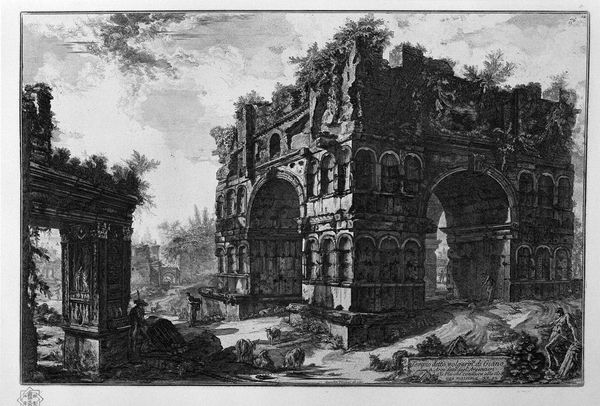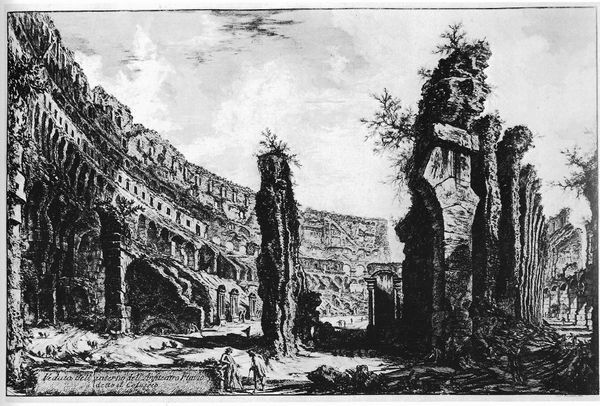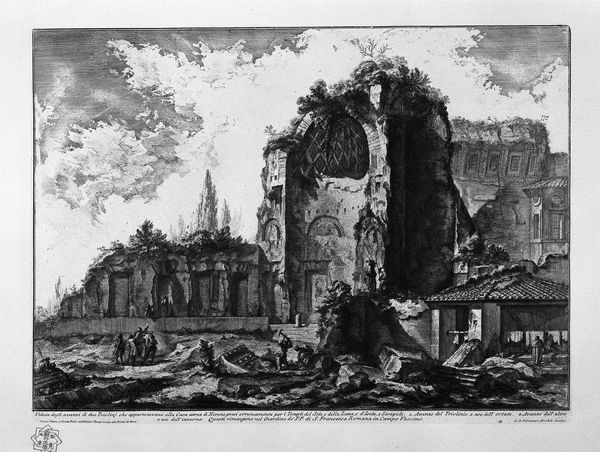
print, etching, engraving, architecture
# print
#
etching
#
landscape
#
classical-realism
#
form
#
romanesque
#
geometric
#
column
#
arch
#
line
#
cityscape
#
history-painting
#
charcoal
#
engraving
#
architecture
Copyright: Public domain
This print, *Vedute di Roma*, was made by Giovanni Battista Piranesi, using etching. Now, think about how the physical act of etching creates this image. Piranesi would have coated a metal plate with wax, then carefully scratched away lines to expose the metal. When the plate was dipped in acid, these lines would be eaten away, creating grooves that would hold ink. The final print is made by pressing paper against the inked plate. Piranesi really highlights the contrast between the solid architecture and the ephemerality of time. Look closely, and you can see how the etched lines give a sense of crumbling stone and overgrown vegetation, juxtaposed with the precision of the architectural details. This speaks to the labor involved, both in the original construction of these Roman monuments, and in Piranesi's intricate work to capture their decay. He wasn’t just making art, but documenting and interpreting history through his craft, inviting us to reflect on the rise and fall of civilizations, and the enduring power of human effort.
Comments
No comments
Be the first to comment and join the conversation on the ultimate creative platform.
